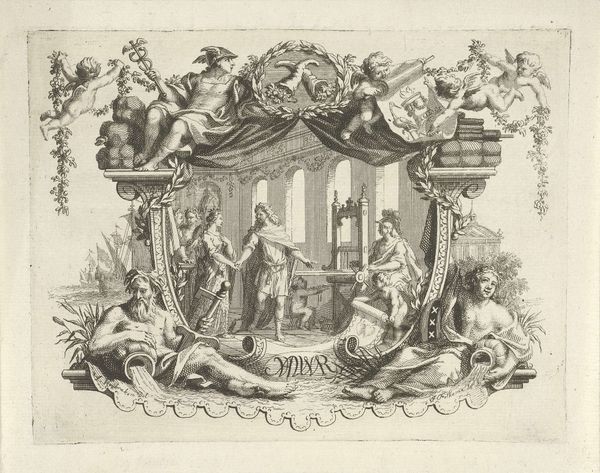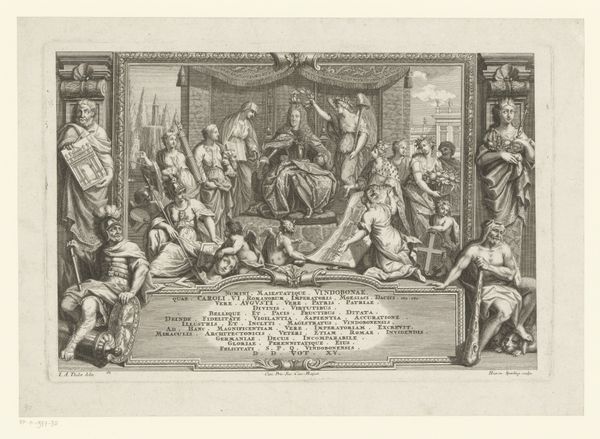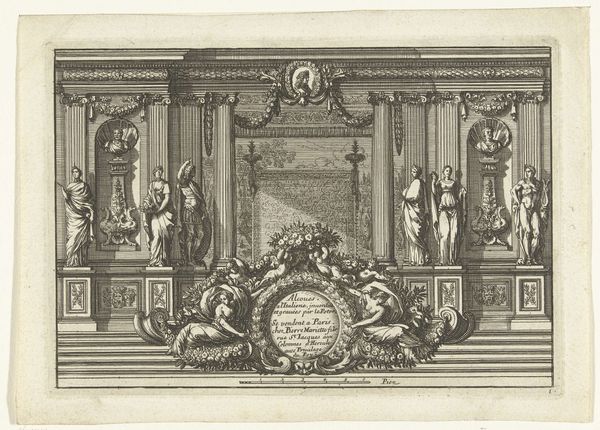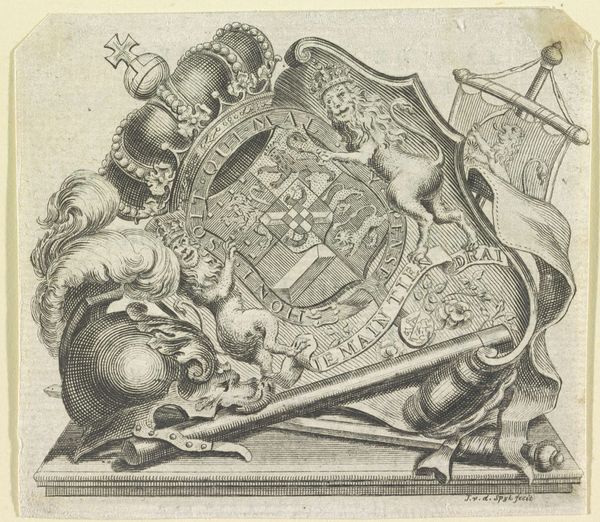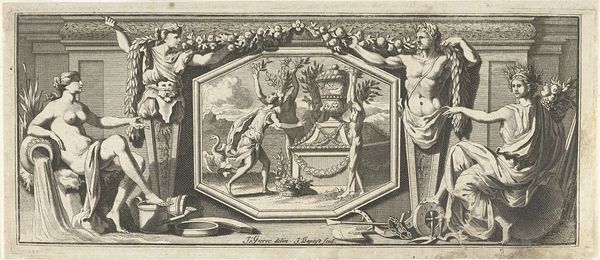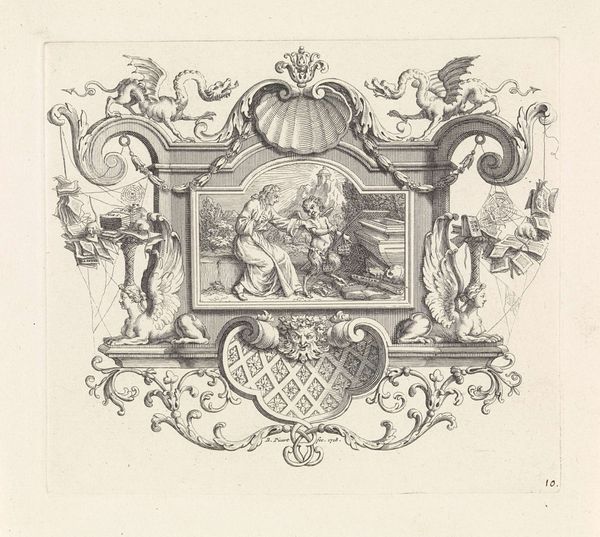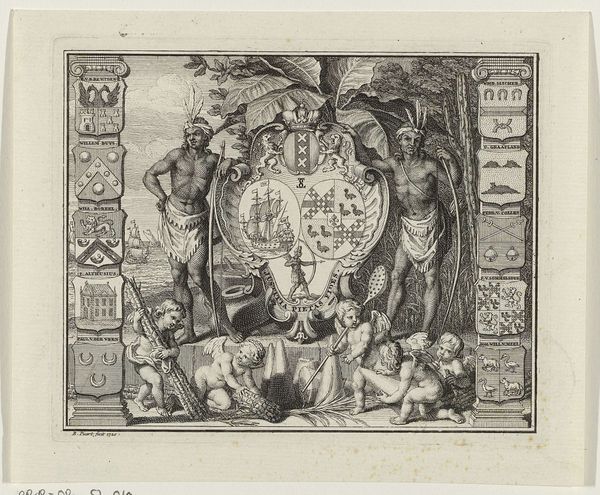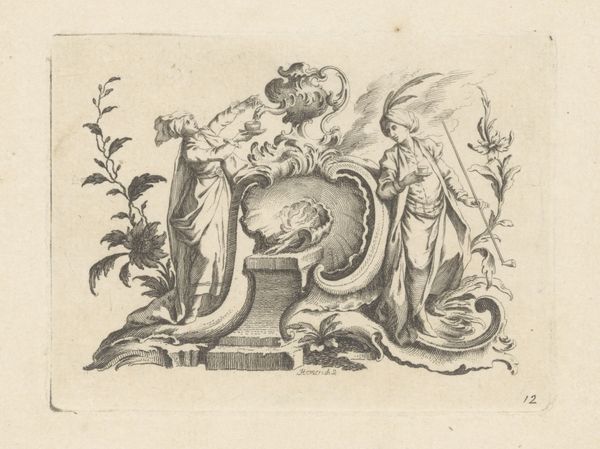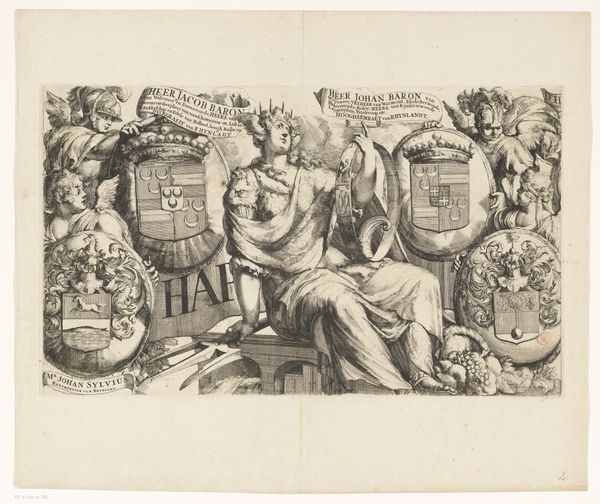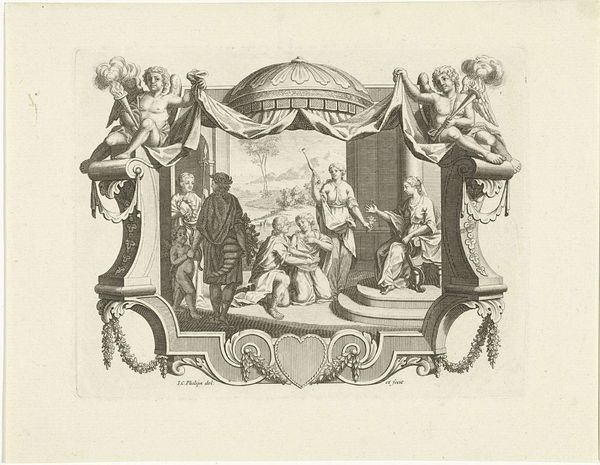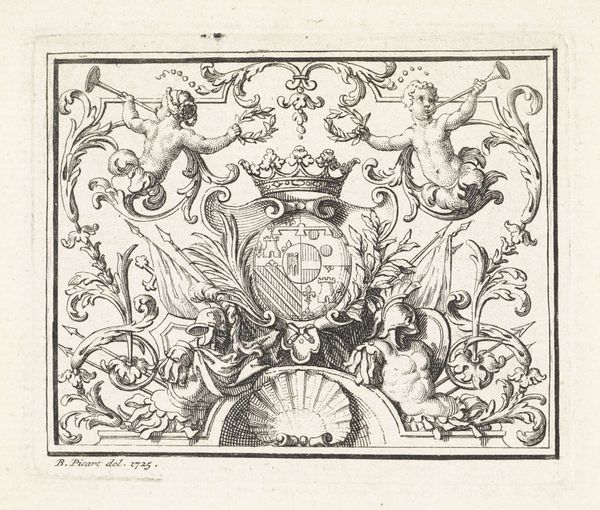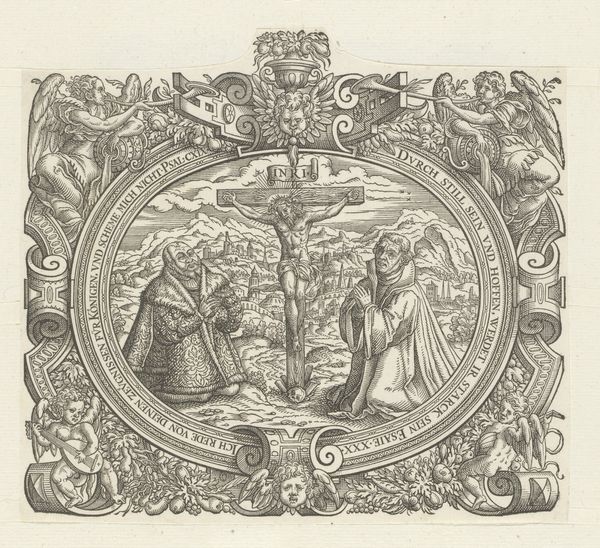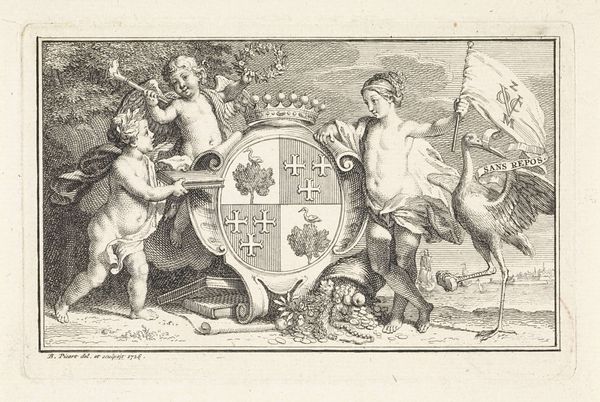
Dimensions: height 105 mm, width 156 mm
Copyright: Rijks Museum: Open Domain
Editor: Here we have "Allegorie op de meerderjarigheid van Willem V," or "Allegory on the Majority of William V," an engraving from 1766 by Cornelis van Noorde, held at the Rijksmuseum. It's packed with symbolism, a real historical snapshot. It almost feels…staged, a bit like a political poster, but done with incredible detail. What stands out to you about it? Curator: Staged, yes! Like history trying on its best clothes. It’s a performance of power, isn't it? Look at the central shield, surrounded by those allegorical figures – Wisdom on one side, Commerce or Naval Power, perhaps, on the other. It feels like a who's who of virtues, all vying for William's attention on his big day. That angel, too, blasting a fanfare – did he need to announce something so obvious? It's all a bit extra, and so very Baroque! What do you make of the lion? Editor: The lion? He looks a bit...bored, actually. Like he's been doing this whole "symbol of strength" thing for centuries and could really use a nap. Curator: Precisely! That lion, weighed down by centuries of expectations. Perhaps Van Noorde is hinting at the burden of leadership as much as the glory? What’s the narrative, beyond the fanfare? And that bookshelf, what kind of statement it’s making, with the crown, ships and weapons depicted with each other. Editor: It never occurred to me to think about burdens, seeing an allegory as simply just celebratory. Maybe that angel blowing the trumpet is overcompensating to distract us from what it actually means to carry such a burden, haha. Curator: Haha, yes, what's behind that blowing the trumpet? Perhaps the key to looking beyond pure iconography resides precisely in thinking about all those “obvious” elements anew, as prompts for different narratives, or deeper ones, that bring old, staged, frozen imagery back to life.
Comments
No comments
Be the first to comment and join the conversation on the ultimate creative platform.
